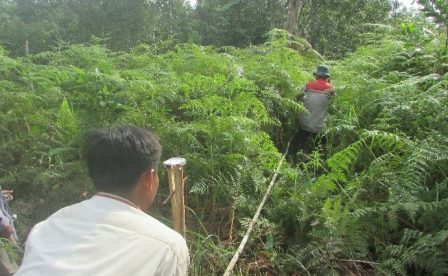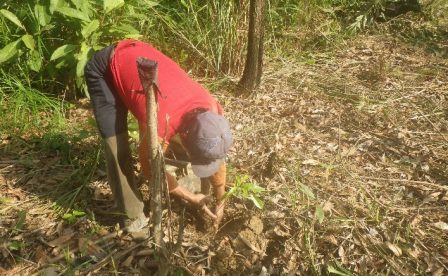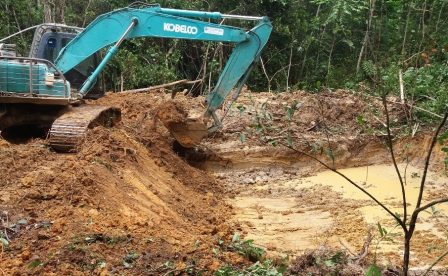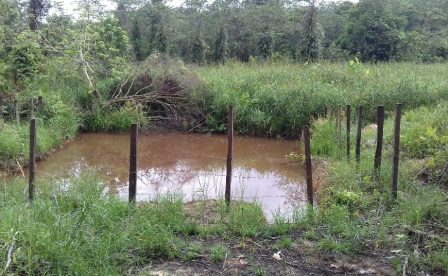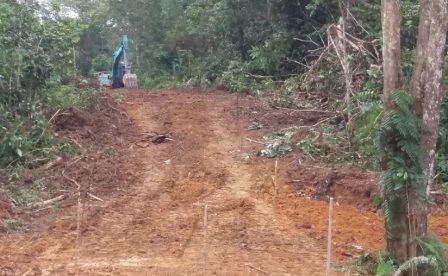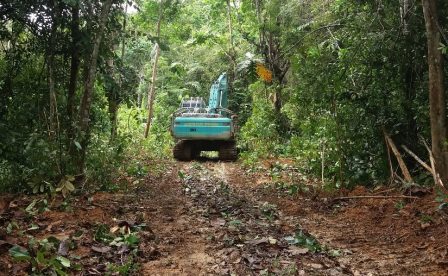Project Update: Orangutan Forest Restoration Project in Indonesia
Indonesia has one of the largest tropical rainforests in Asia which represents approximately 10% of the world’s remaining tropical rainforests. However, it has been degraded by illegal logging and fires over the last 40 years. Despite being illegal in Indonesia, open burning to clear the land for farmland, palm plantation and pulp production is ceaseless because it costs less than proper methods, and the technique often led to massive forest fires.
The project partner, the BOS Foundation (Borneo Orangutan Survival Foundation), is an orangutan conservation organization and they run three rehabilitation centers in Indonesia. One of them is located in Samboja Lestari in East Kalimantan. In 2015, the massive forest fires in Indonesia burned 266 hectares out of 1,800 hectares of the center.
In Samboja, it is required to develop a sustainable forest that connects lives to the future by restoring the tropical rainforest with high biodiversity with a proper management.
For more information about the project
Reforestation
511 seedlings have been planted by BOSF and people from local communities around the project site. A few years have passed since the forest fire in 2015, and the target area seems to be covered with green. It is because that plants grew up so fast in the tropical weather and became grassland, not the forests have restored. As procedure of planting, we start with cut off those plants, dig holes for planting saplings, put fertilizer, and plant.
- Planned planting area covered with green
- Planting sapling
For restoration of forest rich in biodiversity and suitable environment for orangutan rehabilitation, species of planted sapling range from native species such as Dipterocarpaceae to fruit trees which will be food for orangutans when it bears. After planting, we replanted withered seedlings.
| No | Type | Planted Species (Local Name) |
| 1 | Fruit | Syzygium Polyanthum (Daun Salam) |
| 2 | Fruit | Artocarpus integer (Cempedak) |
| 3 | Fruit | Lansium domesticum (Langsat) |
| 4 | Fruit | Baccaurea motleyana (Rambai) |
| 5 | Wood | Shorea balangeran (Balangeran) |
| 6 | Wood | Shorea laevis (Bangkirai) |
| 7 | Wood | Aquilaria malaccensis (Gaharu) |
| 8 | Wood | Dryobalanops oblongifolia (Kapur) |
Infrastructure Development for fire prevention
Reservoirs
6 reservoirs have been constructed. They are located across the site and enable BOSF to execute fire fighting immediately when fire occurs.
- Construction of reservoir
- Finished reservoir
Firebreak
Firebreak is a strip of land in a wood or forest from which the trees have been removed to prevent a fire from spreading. We have constructed and maintained approximately 12km. Since Indonesia is located under the equator and has a tropical climate, plants grow rapidly and cover firebreak, so it is necessary to continue its maintenance.
- Construction of firebreaks
- Maintenance of firebreaks
Reforestation of Burned Site:
Continue reforestation and maintenance of planted area such as mowing and replanting of dead seedlings.
Infrastructure Development:
Constructed necessary number of reservoir. Continue maintenance of both reservoirs and firebreaks.
Tours to the site:
Organize tours to visit the project site with experience of planting trees, a training center of orangutan and rainforests for Japanese to recognize more of the current situation and issues of Indonesian rainforest and support the project.
- Project site: East Kalimantan, Indonesia
- Project term: March 2016~
- Target area: 266ha
- Longitude Latitude: 1°03’00.2”S,116°59’19.7”E
- Target area details: Margomulyo,Samboja,Kutai Kartanegara,Kalimantan Timur
- Project partner: Borneo Orangutan Survival Foundation (BOSF)
- Tree species: Narra, Molave, Dao, Tuai, Palosapis, Balakat-gubat, Kalantas, Pomelo, Citrus family, Lanzones, Rambutan
- Activity contents: Reforestation, Construction of infrastructure
The Borneo Orangutan Survival Foundation
The Borneo Orangutan Survival (BOS) Foundation, a local partner with which More Trees will work to implement the project, is an Indonesian non-profit organization established in 1991 to conserve orangutans. It promotes the conservation of Bornean orangutans and the forest in cooperation with local communities, the Ministry of Environment and Forestry, and international partner organizations. The Foundation has personnel responsible for orangutan rehabilitation and release into the forests, as well as experts in primatology, veterinarians, and experts in the fields of biodiversity, forest rehabilitation, and education.
| Name | Borneo Orangutan Servival Foundation |
| Establishment | 1991 |
| Head Office | Bogor, Java, Indonesia |
| Representative | Dr. Bungaran Saragih |
| URL | http://orangutan.or.id/ |

